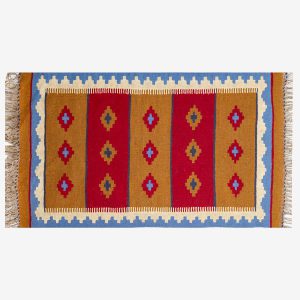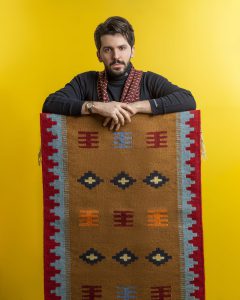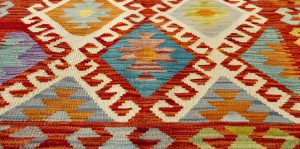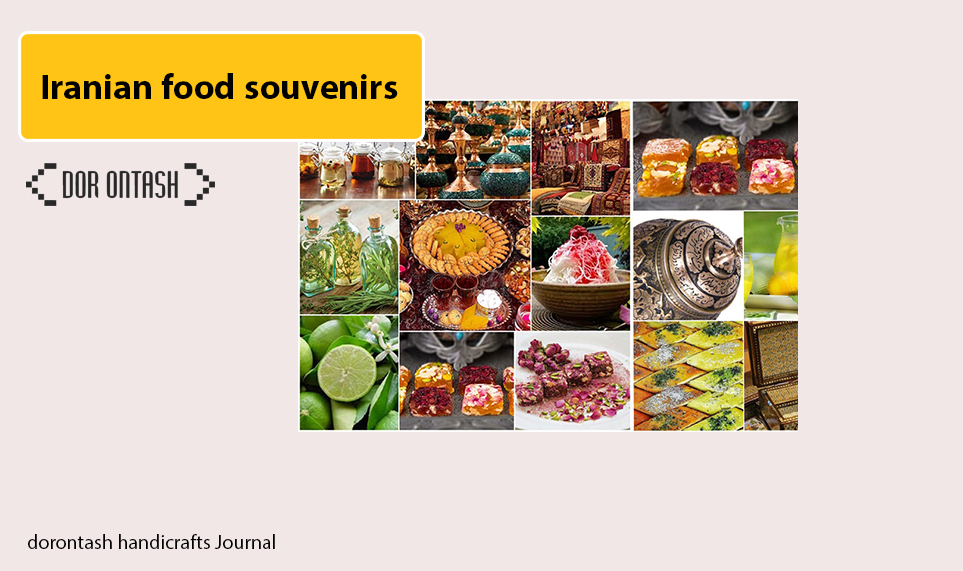A kind of hand-woven underlay whose texture is without fluff is called a kilim; This product is usually produced with natural wool and sometimes it is woven from a mixture of wool and goat hair. Carpet weaving is a women’s art and is mostly seen in rural and nomadic areas of Iran.
kilim raw materials
Since ancient times, this beautiful weave was woven with cream wool threads obtained from sheep’s wool or goat hair, after the passage of time, cotton thread was added to the carpet texture, and today sometimes with synthetic threads such as: acrylic, chrome and aniline. It is woven. Also, the colors used in traditional types have always been natural, but nowadays chemical materials and dyes are also used.
The history of the kilim
After man was able to make clothing from animal skin, he gradually thought of using wool and skin for bedding. When humans invented wool spinning, because they are always preparing comfort items, carpet weaving was created so that humans no longer sit on the dry and cold ground.
Based on historical evidence, the history of this beautiful and valuable art reaches 2500 years before Christ; The oldest woven carpet from this era was discovered among the ancient Egyptian artifacts.
Areas of kilim
In addition to Iran, this hand art is produced in various countries of the Middle East such as: China, India, Pakistan, Afghanistan, Turkmenistan, etc. In our country, in addition to the tribes and nomads, there is this beautiful product in the provinces of Khorasan, Fars, Kurdistan, Baluchistan, Yazd, Azerbaijan, Kermanshah, etc.
Patterns used in the kilim
The designs used in these kinds of weaves are generally geometric patterns that have different shapes, such as: triangles, rhombuses, hexagons, and squares. Of course, many original and traditional motifs decorate the face of Iranian kilim, which sometimes take the shape of animals and nature, and sometimes they are cashmere, flowers, and bushes. The different designs used in these arts depend on the type and region in which they are woven.
kilim weaving steps
Like a kilim, after it has been installed, different steps are taken to weave the kilim, which you will get to know briefly below:
- Chelekhesh: It is the first step for weaving, during which two ropes of the desired size are tied parallel to the under-bar, which is called string, and the beginning of the cotton thread is tied to the left or right end of the under-bar; Then the ball of cotton thread is passed behind the first string and in front of the second string, and it is taken from the top of the string to the back and taken out from the lower part of the string.
- Closing Koji wood: It is a cylindrical wood whose diameter is usually 4 cm and the width is the size of the device.
- Fixing the chelas: because they hit the work during weaving for more density and compression of the wefts, the chelas must be fixed so that they do not move and the shape of the kilim does not get messed up; For this purpose, they usually apply a little glue on the buckets.
- Chain weaving: This work is usually done before weaving, to speed up the weaving.
Iranian kilim weaving methods
Two methods are defined for Iranian carpet weaving:
- Wefting method: In this method, only weft thread and warp thread or chele are used for weaving, in this way, colored weft threads are passed from the bottom and top of the warp threads, and different patterns appear on the work by changing the color of the wefts. In this way, it becomes smooth and uniform on top and bottom.
- Twisted weft method: In this method, artists use another thin weft in addition to the warp and weft threads to weave the kilim, in such a way that the wefts pass through the middle of the threads by twisting them, and then the thin weft passes through them and that They beat it with a comb and make it uniform. This method, which is similar to carpet weaving, is considered to be the connection point between carpet weaving and the emergence of the art of carpet weaving.

Types of kilim in terms of texture
In general, in different regions, kilim have three texture models:
- Simple weaving: these models have one side and are not woven from a predetermined plan, the role of these kilim is generally geometric, and in their weaving, the wefts are passed one by one through the middle of the threads.
- Embossed pattern: In this type of fabric, the background is simple and its designs are placed on it in an embossed or tufted form; These designs are knitted from the carpet map on the threads of the carpet, and in the final stage, the additional piles are arranged.
- Verni: The texture of this model is without piles and it does not have more than one side. The production of this kilim is done without a plan and mentally by artists. This product originally belongs to Azerbaijan, but it is also woven in Kurdistan and Kerman with different designs, and the best Verni is woven by Il Shahson in Iran, which has a long history among them.


